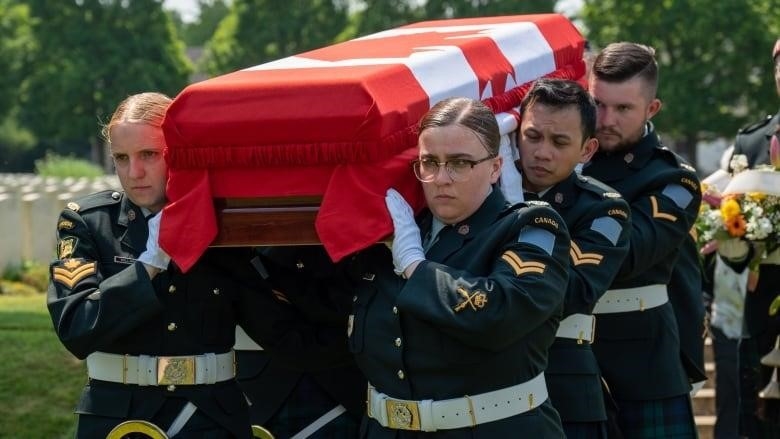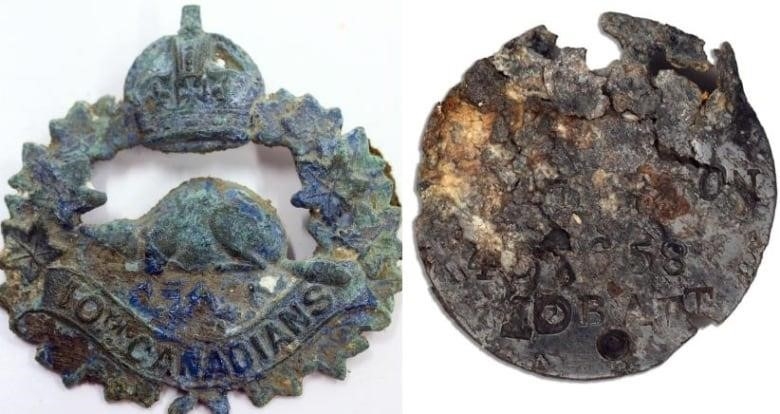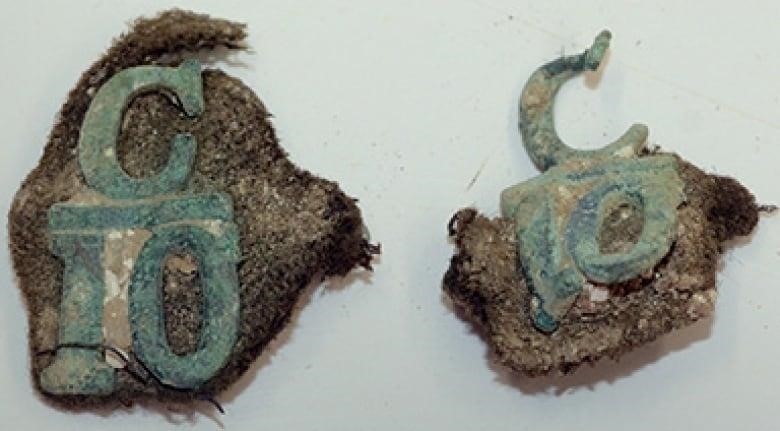
Private Harry Atherton’s funeral is attended by members of the Calgary Highlanders
This month, a soldier from Calgary who went missing during World War I was found, identified, and laid to rest in France.
On August 15, 1917, the first day of the Battle of Hill 70 near Lens, France, Private Harry Atherton went missing and was thought to be dead.
In June 2017, a group that cleans up munitions in France found human bones on land that was going to be built on.
After a long process of figuring out who they were, the remains and other clues, like a broken ID badge, were found to belong to Atherton.
Atherton was buried with military honors in the Loos British Cemetery in Loos-en-Gohelle, France, last week. He was buried there with two other Canadian soldiers who had just been found.
At the military funeral, family members of the soldier and members of his unit, the Calgary Highlanders, were present.
Major David Peabody, who is in charge of operations for the Canadian Army’s Calgary-based Highlanders, went from Calgary to Lens for the funeral.
He said, “I think it’s important for us as soldiers to know that even after all this time has passed, Canada is still making sure that these people get a proper burial and are cared for, and that they aren’t forgotten.”
Peabody says that he talked to a distant relative of Atherton’s at the funeral. They talked about a set of pen knives that were found on Atherton when he was found.
“One member of the family just looked at me with wide eyes. “I have a collection of pen knives,” he said. And it’s been passed down in the family,'” Peabody said.
“I think he realized how important this was. So it was something special to see that happen.”
Finding lost soldier
It’s not as rare as it might seem to find Atherton and other Canadian soldiers in France.
Due to the possibility of unexploded bombs in the ground, areas have to be swept before they can be built on. Every year, human remains are found in France and Belgium.
“Most of them are British. “Sometimes there are Germans in there, but more than 50 skeletons are found every year,” said Sarah Lockyer, who works for the Department of National Defence as a casualty identification coordinator.

The bodies of the three Canadian soldiers who were recently buried were all found close to where the Battle of Hill 70 took place. Corporal Percy Howarth was found in 2011, and Atherton and Sgt. Richard Musgrave were found in 2017.
In Atherton’s case, a 10th Battalion insignia and a damaged identification disc gave hints about who he was.
Lockyer says that finding the bodies of soldiers is just the first step in a long process of figuring out who they were.
A forensic anthropological analysis checks for DNA, and genealogy research is also done. The location of the finds must be linked to historic battles in the area.
Lockyer says she loves being able to do this work for the sake of history and to help families find peace.
“As a forensic anthropologist, this is the end of everything for me. They have their name back and their face back, which is worth a lot.

Who was Harry Atherto
Atherton was born to James Henry Atherton and Sarah Atherton in Leigh, England, in 1892.
In 1913, Athertons went to Canada by himself and settled in McBride, B.C. Before he joined the army in Edmonton in 1916, he worked as a carpenter.
He was in the 10th Canadian Infantry Battalion, which became the Calgary Highlanders after the war.
Atherton fought in many battles before he got to Liverpool, England, in 1917. He got there by way of New Brunswick. He got hurt and got better in England before going back to the front.
He died in the Battle of Hill 70, which was the successful capture of a significant high area held by German forces near the French city of Lens.
On August 15, 1917, it was said that Atherton had been killed in action.He was 24 years old at the time.
His name is written on the Canadian National Vimy Memorial, along with the names of other soldiers whose graves are unknown. But that’s no longer true for Private Harry Atherton.
